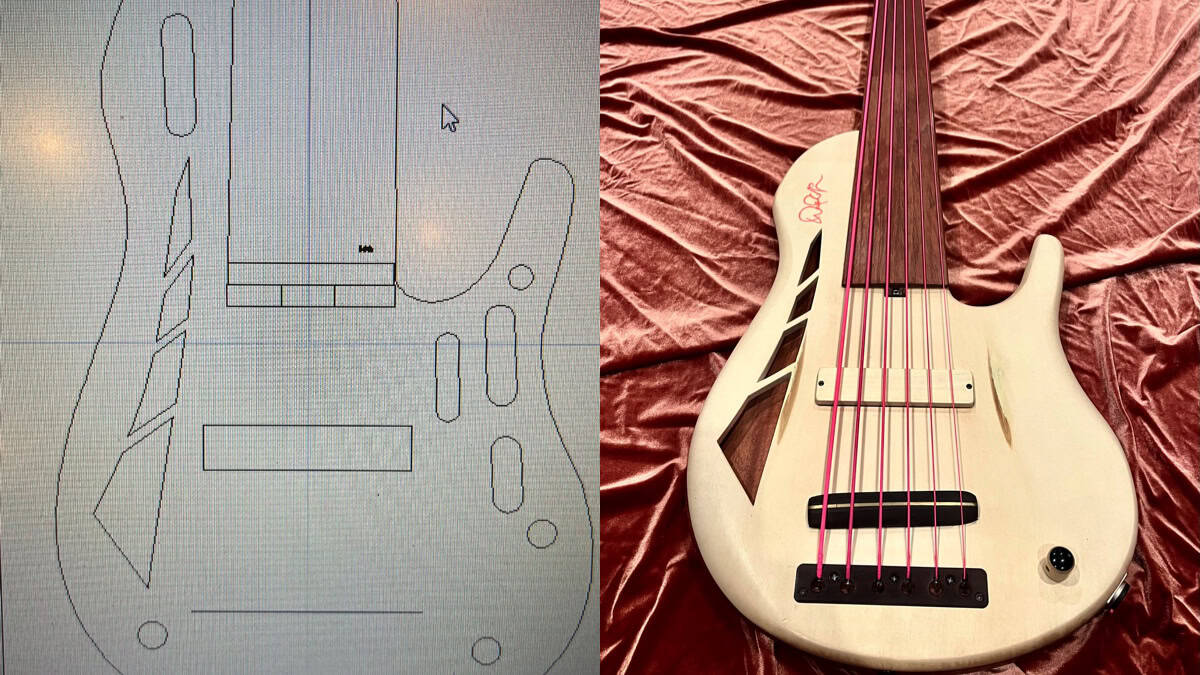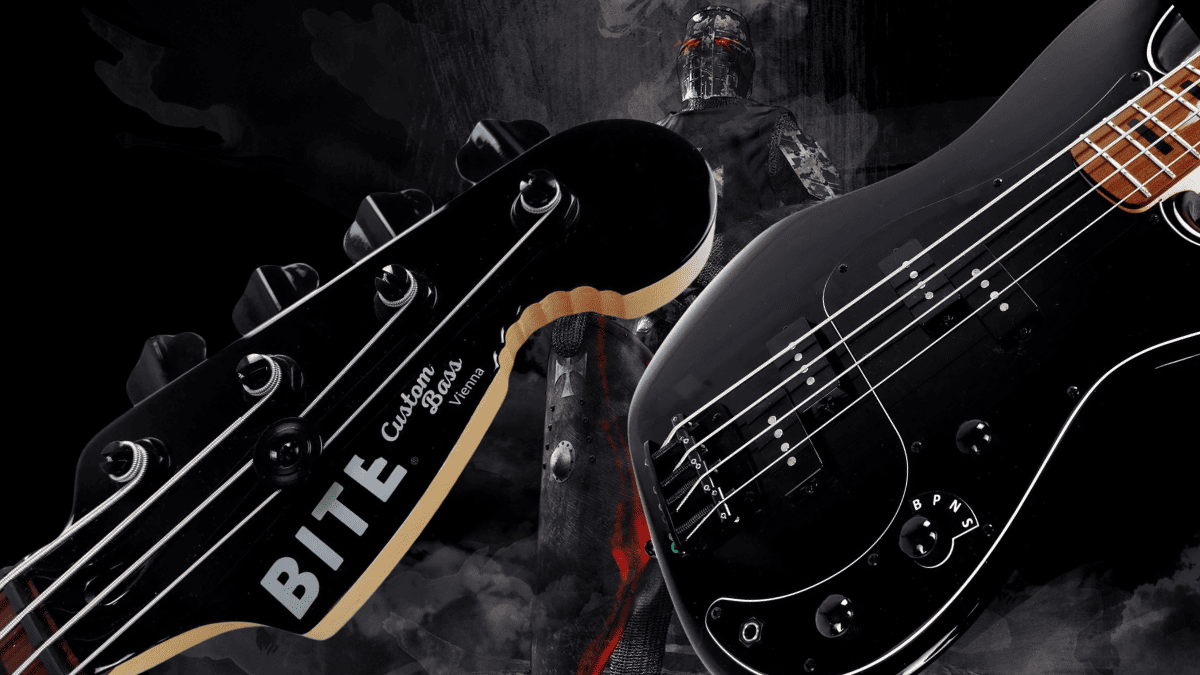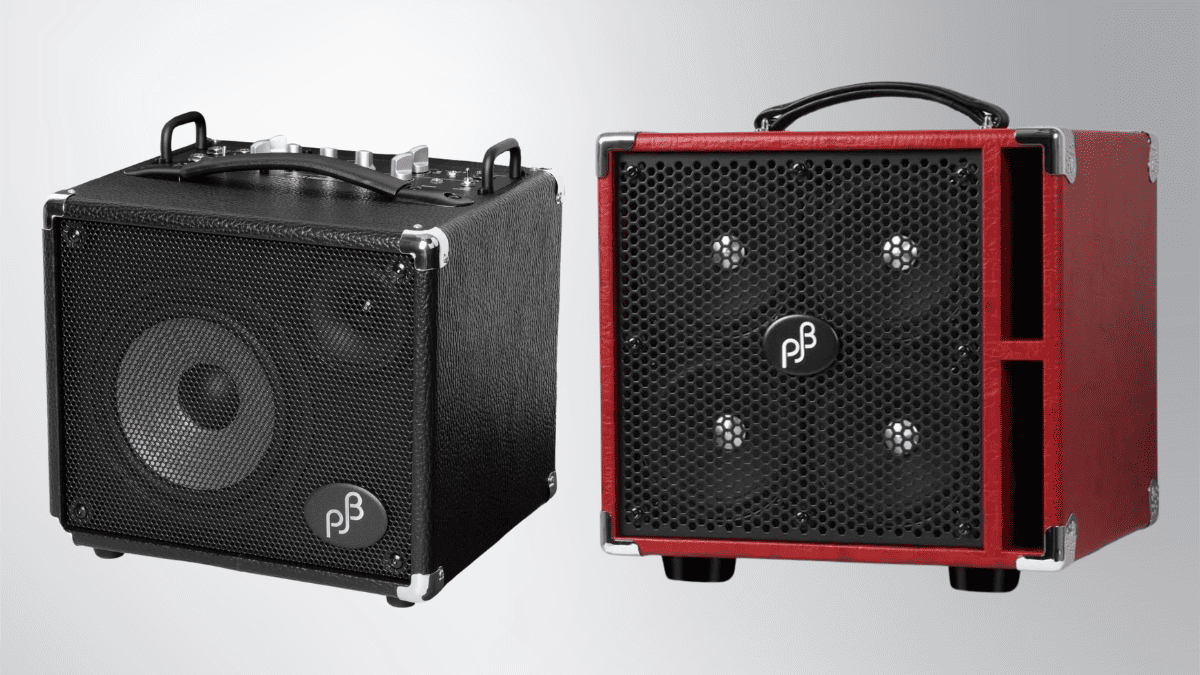Gear Reviews
Hearing Protection Options for Musicians

I would expect very little argument if I were to state, “You don’t really know the true value of what you have until you lose it”.
Many things come to mind as we ponder this concept. Your first bass, your hair, your physical condition as you age, and of particular value to musicians, our hearing!
I am sure that we can all look back at our lives and identify occasions where we should have protected our hearing.
I recall when I was playing with a band back in the 70’s that we would occasionally do an evening variety show on local TV. This show had a house band and it was there that I noticed that the bassist had some sort of metallic plugs in his ears. It didn’t dawn on me that this might be a great idea and instead I played for years without taking any protective measures.
Life in general is a very noisy existence. We are often assaulted by excessive noise and hearing loss is a much greater concern than ever. A recent article from Men’s Journal suggested that twice as many people have hearing loss now than in the eighties. It is not surprising to note that the increased use of devices with headphones or earbuds has had a significant effect on this trend. In addition, we are constantly subjected to ambient noise that is often a lot higher than we might realize.
The sounds of living in cities, work environments, movies, home appliances, power tools, clubs and music venues are often excessively loud. And… how often do you wear protective equipment? Do you have a recent memory of going to a concert and having prolonged ringing in your ears after the fact for a day or two?
When we look at noise reduction, we use units called decibels.
Without going into great mathematical detail, it is important to point out that the decibel scale is logarithmic, meaning that it is kind of a curve where small numerical increases in value represent large increases in sound volume. For example, 30 dB has a power ration of 1000 compared to a 10 dB power ration of 10.
The Noise Reduction Rating tells us by how many Decibels the surrounding sound is reduced.
This rating is essential in the selection of the correct gear for the job. Wearing insufficient protective plugs will be better that nothing but you may still suffer damage from the excess.The key is to find the right amount of noise reduction that still allows you to enjoy the sounds you want to hear.
I think I have made my point… we need to do more to protect our valuable hearing!
That said, we have decided to take a look at just some of the options that are available. It is really important to consider the user’s needs as well as just how much sound reduction we desire. We are also going to limit our search to music related applications (Not shooting range, swimming pool, sleeping, etc.).
Musicians on stage often wear “In Ear” monitors. These allow ‘in’ enough sound, while preventing excessive noise. They can be custom fitted or stock sizes. Here are some videos we have about in ear monitors and related gear.
Fender Professional in Ear Monitors
More info fave.co/2sNa7yY
Ultimate Ears in ear monitors
More information at fave.co/2tnbK3y
If you aren’t plugged in to the sound system, the next best thing would be ear plugs.
First, we look at what I would describe as “Smart” earplugs. They let you hear clearly when the sounds are not loud but protect you when things get extreme.

These devices can be set at a noise attenuation level of 9 dB or 15 dB (They are rated at 25 dB noise reduction ) and will actually boost softer sounds for greater clarity. Note that sometimes when you are in a quiet area, your earplugs will pick up sounds you would usually not hear (like when you are in line for the restroom) so I suggest taking them out when you don’t really need them. These little guys run on a #10 Zinc air battery for about 300 hours.
The great thing about these is you can hear conversations without having to remove them and this lends itself to situations where the sounds vary frequently. They are a stock fit but the manufacturer has included a variety of accessories that you can use to find a comfortable format (either a three flange array or a foam tip) and maintain the units functioning optimally. The applications for this kind of earplug are endless, as we are often in environments where the sound levels vary greatly. How many time have you been at a show and wanted to talk in-between songs? These earplugs offer professional level protection for both musicians and the general public.
These are great for venues where the music isn’t too loud or you won’t be too close to the speakers.
More information at fave.co/2sNuRGK
Next we look at the more familiar variety of earplugs that are designed to reduce the ambient noise at different levels depending on the material and designed used.

These earplugs have a Noise reduction rating of 13 dB. They use an in ear design similar to the Music Pro’s, with interchangeable and replaceable tips. This lends itself for these to be a multi-use kind of product where you can get replacement tips every 3-6 months depending on use. With this design you get comfort and clarity at a much lower price.
They come with a carrying case and neck cord. I like the cord because you will be taking them out to hear during quiet times, but you can have them readily at hand when the show gets going.
More info fave.co/2tmWbbW

These earplugs have a Noise reduction rating of 33 dB. They basically have a Titanium core and an Earfoam tip portion that comes in three sizes, and can be changed easily and are readily available to replace. They are designed to fit over 98% of people. The titanium core is designed to remove “Mud/Muffle” and loud peaks letting you hear more details in music. I felt like the foam kind of pushed the plugs out of my ears as time went by and I was constantly having to push them back into place (maybe I am one of the 2%). As these little guys are a bit on the higher price side, you don’t want them falling out in a dark venue. You might be able to tie a string on them as a neck cord. They come with a pouch for safe keeping.
More info at fave.co/2sNa1HI

These have a 31 dB noise reduction rating. These earplugs use a combination system where they have an in ear canal foam or silicone eartip, a sound plug (that can come with a lanyard) and a thermoplastic custom mold. Essentially you heat the mold in hot waters and once it has cooled enough, you can fit it exactly to your ear. If you don’t get it right the first time, you can reheat and remold as many times as you want. The nice thing about a custom fit is that they don’t fall out easily. The combination in canal portion with the moldable body give enough protection that these guys block out enough sound to be used at the shooting range. This might be too much if you are trying to play a string instrument but could be great for our drummer friends.
More info at fave.co/2tmGv8T
Macks Pillow Soft Silicone Earplugs
With a 22 dB noise reduction rating, these earplugs prove that you don’t have to spend a lot (under $4.00 USD for six pairs) for a comfortable, reusable, ear protection option. They are made of translucent silicone, moldable, putty that shapes itself to your exact ear canal. They are water proof and so comfortable that they often are used to block out snoring (my wife can attest to their efficacy)! Even though they are re-usable, they do have to be changed after about 5 uses when they get dirty or stop being sticky.
More info at fave.co/2t4H8ae
This is by far the most common type of hearing protection you will find. There are numerous brands available and from what I can tell, most are comparable when it comes to the degree of hearing protection ranging from 29-33 dB noise reduction. These are all single use, disposable, and relatively comfortable with a variety of colors and shapes. They lend themselves to be used under “ear muff” style protective devices to double the protective value (at the shooting range). Price wise, these are available in bulk quantities for a low price (I found 50 pair for $8.99 USD) or unit dosed packages, which sometimes are given out free at events.
Here are some options I found
- Mack’s Ear Care Ultra Soft Foam Earplugs, 50 Pair fave.co/2vNMi8t
- Mack’s Ear Care Slim Fit Soft Foam Earplugs, 50 Pair fave.co/2t4B0Pf
- The Ear Buddy Premium Soft Foam Ear Plugs, NRR 32 Decibels, 50 Pair fave.co/2tElx5h
- HEAROS Ultimate Softness Series Ear Plugs 28 Pair fave.co/2tDYx6o
- HEAROS Xtreme 100 Pair Foam Ear Plugs With NRR 33 Noise Canceling Hearing Protection fave.co/2tEbblR
- Innerpeace Ventures Chill Box Ear Plugs, 20 Pairs fave.co/2tEpzee
Summing up, I have no doubt that protecting our hearing is of the utmost importance! There are many options available at different price points and different applications, so you really have to see what feels best and works best for you.
If you have any recommendations, feel free to share on social @bassmusicianmag with some detail so others may benefit from your experience.
Opening Photo by Maelle Ramsay on Unsplash
Gear
New Joe Dart Bass From Sterling By Music Man

Sterling by Music Man introduces the Joe Dart Artist Series Bass (“Joe Dart”), named after and designed in collaboration with the celebrated Vulfpeck bassist.
Above photo credit: JORDAN THIBEAUX
This highly-anticipated model marks the debut of the Dart bass in the Sterling by Music Man lineup, paying homage to the Ernie Ball Music Man original that all funk players know and love. The bass embodies many of the original model’s distinctive features, from its iconic minimalist design to the passive electronics.

The design process prioritized reliability, playability, and accessibility at the forefront. Constructed from the timeless Sterling body, the Dart features a slightly smaller neck profile, offering a clean tone within a comfortable package. The body is crafted from soft maple wood for clarity and warmth while the natural finish emphasizes the simple yet unique look.
Engineered for straightforward performance, this passive bass features a ceramic humbucking bridge pickup and a single ‘toaster’ knob for volume control. Reliable with a classic tone, it’s perfect for playing in the pocket. The Dart is strung with the all-new Ernie Ball Stainless Steel Flatwound Electric Bass Strings for the smoothest feel and a mellow sound.

The Sterling by Music Man Joe Dart Bass is a special “Timed Edition” release, exclusively available for order on the Sterling by Music Man website for just one month. Each bass is made to order, with the window closing on May 31st and shipping starting in November. A dedicated countdown timer will indicate the remaining time for purchase on the product page. Additionally, the back of the headstock will be marked with a “2024 Crop” stamp to commemorate the harvest year for this special, one-of-a-kind release.
The Joe Dart Bass is priced at $399.99 (MAP) and can be ordered globally at https://sterlingbymusicman.com/products/joe-dart.
To learn more about Joe Dart, visit the official Vulfpeck artist site here https://www.vulfpeck.com/.
Gear Reviews
The Frank Brocklehurst 6-String Fretless Bass Build

A few months ago, my Ken Bebensee 6-string fretted bass needed some TLC. You know, the one rocking those Pink Neon strings! I scoured my Connecticut neighborhood for a top-notch luthier and got pointed to Frank Brocklehurst, F Brock Music. He swung by my place, scooped up the bass, and boom, returned it the next day, good as new. Not only that, he showed up with a custom 5-string fretted bass that blew me away. I couldn’t resist asking if he could whip up a 6-string fretless for me.
Alright, let’s break down the process here. We’ve got our raw materials: Mahogany, Maple, and Holly. Fun fact – the Mahogany and Maple have been chilling in the wood vault for a solid 13 years. Frank is serious about his wood; they buy it, stash it away, and keep an eye on it to make sure it’s stable.
First up, they’re tackling the Mahogany. Frank glues it together, then lets it sit for a few days to let everything settle and the glue to fully dry. After that, it’s onto the thickness planer and sander to get it nice and flat for the CNC machine. The CNC machine’s the real star here – it’s gonna carve out the body chambers and volume control cavity like a pro.
While the Mahogany’s doing its thing, Frank goes onto the neck core. Three pieces of quartersawn maple are coming together for this bad boy. Quartersawn means the grain’s going vertical. He is also sneaking in some graphite rods under the fingerboard for stability and to avoid any dead spots. The truss rod is going to be two-way adjustable, and the CNC machine’s doing its magic to make sure everything’s just right.
Now, onto the design phase. Frank uses CAD software to plan out the body shape, neck pocket, chambering, and those cool f-holes. I had this idea for trapezoid F-holes, just to do something different. The CAD software also helps us map out the neck shape, graphite channels, and truss-rod channel with pinpoint accuracy.

Once everything’s planned out, it’s CNC time again. Frank cuts out the body outline, neck pocket, and the trapezoid F-holes. Then it’s a mix of hand sanding and power tools to get that neck just how we like it. Oh, and those f holes? We’re going for trapezoids of different sizes – gotta keep things interesting.
Next step: gluing that neck into the pocket with some old-school hide glue. It’s got great tonal transfer and can be taken apart later if needed. Then it’s onto hand-carving that neck-body transition.
For the custom-made bridge, Frank uses brass for definition and Ebony for tonal transfer and that warm, woody sound.
BTW, for tunes, Frank went with Hipshot Ultralights with a D Tuner on the low B. This way I can drop to a low A which is a wonderful tone particularly if you are doing any demolition around your house!
Now it’s time for the side dots. Typically, on most basses, these dots sit right in the middle of the frets. But with this bass, they’re placed around the 1st, 3rd, 5th, 7th, 9th, and 12th frets.
Frank’s got his pickup hookup. Since the pickup he was building wasn’t ready, he popped in a Nordstrand blade to give it a whirl.
It sounded good, but I was itching for that single-coil vibe! And speaking of pickups, Frank showed me the Holly cover he was cutting to match, along with all the pink wire – talk about attention to detail!
A couple of things, while it is important for me to go passive, it is equally important for me to just go with a volume knob. Tone knobs are really just low-pass filters and the less in the way of a pure sound for me, the better.
Finally, it’s string time! As usual, I went for the DR Pink Neon strings. Hey, I even have matching pink Cons…Both low tops and high!
Once we’ve got everything tuned up and settled, we’ll give it a day or two and then tweak that truss rod as needed. And voila, we’ve got ourselves a custom-made bass ready to rock and roll.
I want to thank Frank Brocklehurst for creating this 6 string beast for me.
Gear Reviews
Review Transcript: BITE Custom Bass – The Black Knight PP Bass

This is a written transcript of our video review of the BITE Custom Bass Black Knight PP Bass originally published on March 4, 2024
BITE Custom Bass – The Black Knight PP Bass Review…
Bass Musician Magazine did a review on a Steampunk bass from BITE Guitars about three years ago, it was an amazing instrument, and we were very impressed. Now we’re happy to bring you another BITE bass, the Black Knight PP.
Everybody needs a P-type bass, it’s the standard of bass. If you’re recording, they want you to have a P bass. So why not have something that gives you a little more by having two instead of one P pickup. That’s the idea of this bass, it’s the first thing that leaps out: the double P pickup configuration.
Installing two of their 1000 millivolt split-coil pickups, BITE then went one step further and wired them up in a 4-way parallel/series circuit, a look at the controls reveal a 4-way rotary selector:
The first position, marked “B”, gives you the bridge pickup by itself.
The second position, marked “P”, gives you the bridge and neck pickups in parallel mode, that’s the traditional J-type circuit, it reduces output due to the physical law of parallel circuits.
Position number 3 is marked “N”, it gives you the neck pickup by itself.
And finally, number 4, marked “S”, gives your bridge and neck in a series (humbucking) mode which adds up resistances and thus boosts output. The other two controls are master volume and master tone.
What’s more, like every BITE bass, this one also has a reinforced headstock heel designed to give it extra output and sustain. The BITE website features a graph and explanation of what they have done to the heel, as compared to traditional headstocks.
A look at the body reveals a beautiful Black Blast body finish and underneath that we have alder wood. The bass has a matching headstock with a 4-in-line tuner setup and the traditional bite out of it, so everybody will know what kind of bass you’re playing. The pickguard is 3-ply black, the neck is vintage tinted hard maple and it has a satin speed finish at the back which keeps your thumb from sticking.
On top of that, there’s a clear-coated roasted black locust fretboard with black blocks marking the frets. The nut is a black Graph Tec nut, we’ve got diamond dome control knobs, and the tuners are lightweight compacts with cloverleaf buttons and a 1:17 ratio precision gear. The bridge is a Gotoh brass bridge with 19-millimeter string spacing.
Overall measurements: we’ve got a standard 34″ scale, a 1.65″ width nut and a C neck profile. This bass weighs 8.2 pounds, or 3,7 kilograms for our metric friends, and it uses standard 18% nickel silver frets.
Taking a closer look at the sound, this bass is a joy to play. The BITE proprietary 1000 millivolt pickups deliver an extraordinary amount of output which is surprising considering this is a passive instrument. You may even want to set your amp to active mode because of all of the juice you’re getting out of this guy.
The tonal possibilities are very versatile, it’s a straight P if you want but also much more with those different arrangements of the circuitry. So why have multiple basses when you’ve got one that can give you your basic P plus a lot more?
To sum it up, the Black Knight PP is an amazing instrument. The attention to detail that BITE puts into their basses is second to none. This bass is also amazingly balanced and gorgeous to hold and feel with the satin neck finish.
For more information, visit online at bite.guitars/product/black-knight-pp
Bass Videos
Reviews: Phil Jones Bass Compact Plus 450 and Bass Engine 17

Phil Jones Bass Compact Plus 450 and Bass Engine 17 Reviews…
In this issue, we take an in-depth look at two new amps from Phil Jones Bass, the Compact Plus 450 and Bass Engine 17.
For more information, visit online at pjbworld.com
Bass Videos
Video Review: BITE Custom Bass – The Black Knight PP Bass

BITE Custom Bass – The Black Knight PP Bass Review…
I am sure many of you saw my review of the Snobby Steampunk Bass from BITE Guitars back in February of 2021 and will remember what a remarkable bass it was. BITE has been building custom basses since 2019 and has a unique custom approach where you can configure your bass to your specs.
I am very excited to have another Bass From BITE Guitars in my hands, The Black Knight PP Bass!
The need for a P-Bass in one’s armamentarium is pretty standard for bass players and I recall chatting about this with Marty O’Brien about a year ago. It turns out that Marty and BITE Guitars got together and came up with this excellent configuration that gives you a P-Bass with a whole lot more. Marty even played his own Black Knight PP bass at the 2024 NAMM show. You can see his review here.
Join me as I take an in-depth look at this very cool instrument and share all the details.
Here is The Black Knight Bass from BITE Guitars!
For more information, visit online at bite.guitars/product/black-knight-pp

























